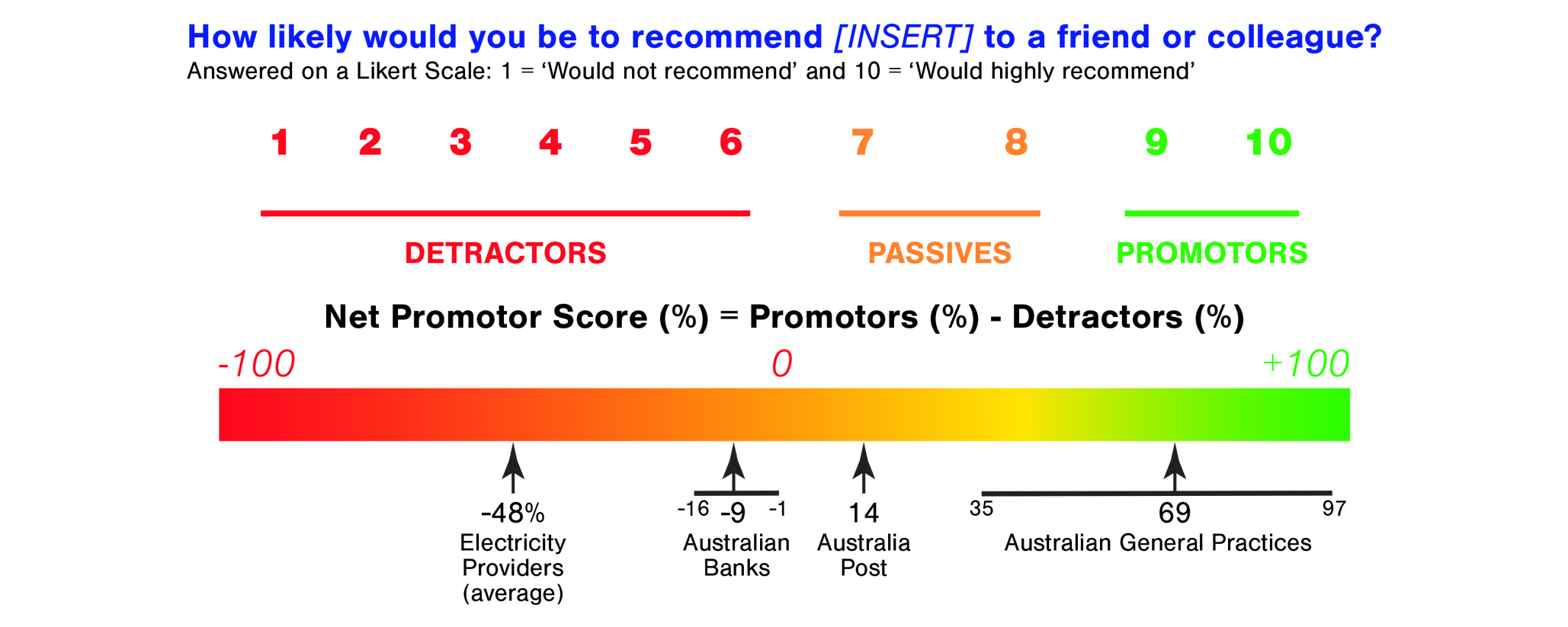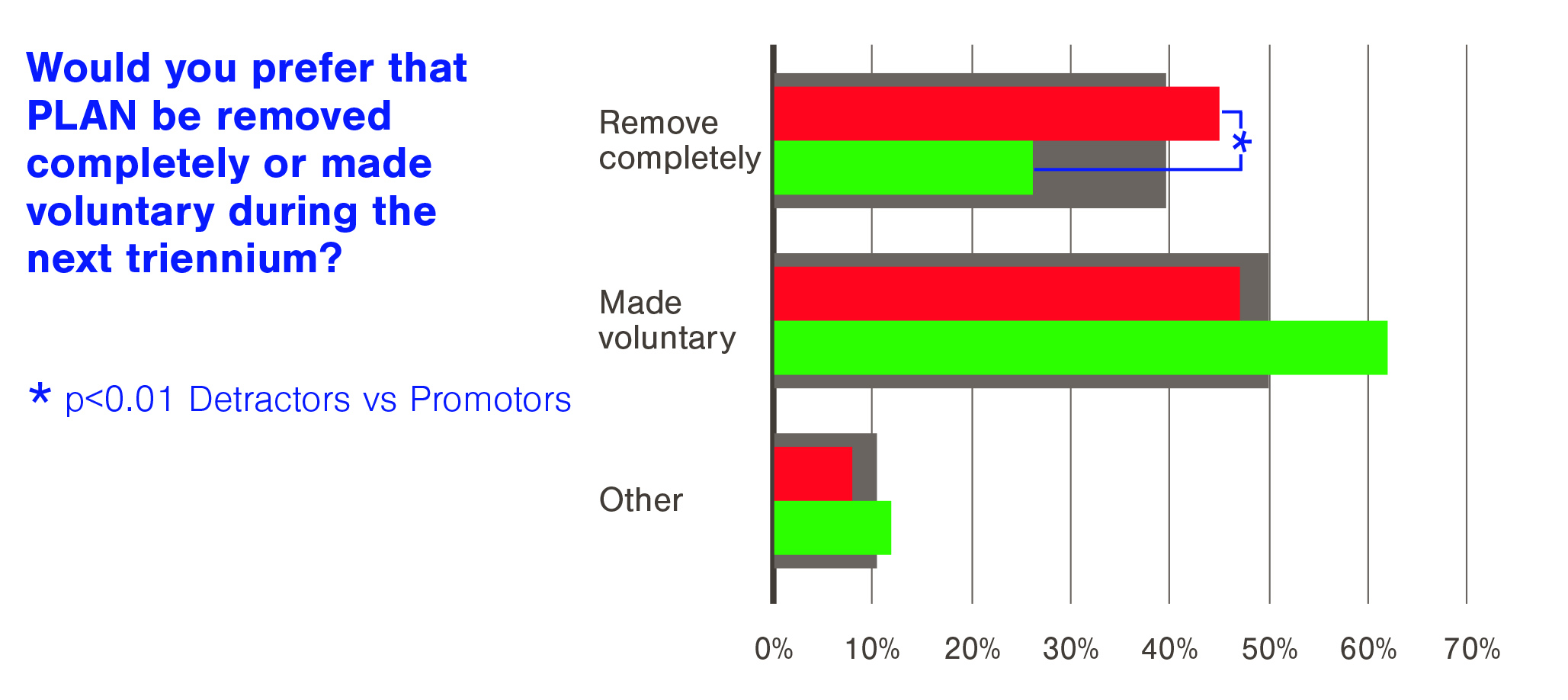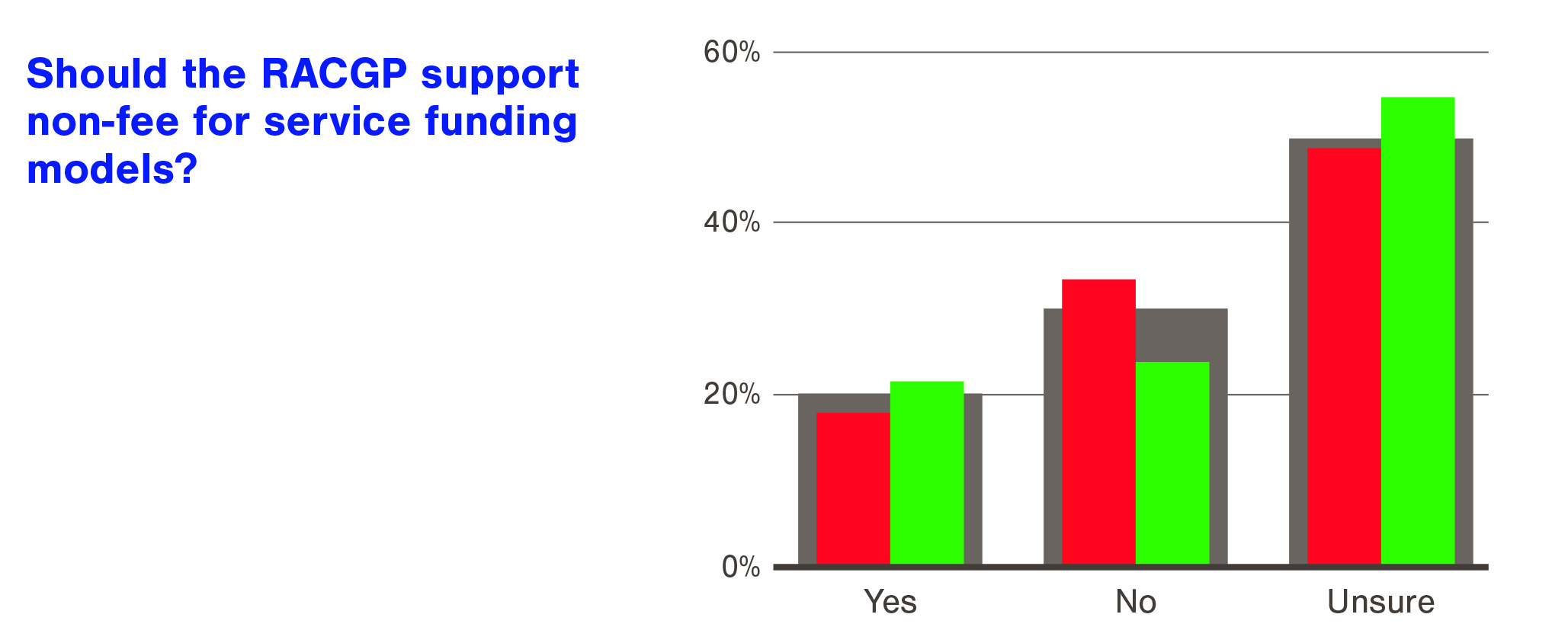A local expert on the global customer satisfaction methodology, NPS, says the RACGP’s score should be a huge worry for the organisation
In the recent RACGP and RACP elections, the eventual winners of each had something in common. They both surveyed the members about what they felt about the college and what they thought could be improved as a part of their campaign.
The results of both simple email surveys certainly raised some potentially serious issues about the satisfaction of members. In the case of the RACP survey, to the question: “Are you satisfied with the value for money you receive with current fees?” 66% answered in the negative.
In the RACGP survey, only 20% of those surveyed rated the value of their membership as good or excellent, and only 35% said they would recommend the college to a colleague. President-elect Dr Harry Nespolon, said that as a part of his reign he wanted to understand why things were not “as positive as they should be”.
How positive should members feel about a medical college in this day and age? It’s not an easy gig for sure, especially with the direction that MBS funding has been heading, and where the government has positioned general practice in terms of its funding priorities.
Many in the business community, and some not for profits, take employee/member satisfaction very seriously and use globally benchmarked satisfaction survey methodologies, to gauge the issue within their organisations, and how they can improve themselves. In the case of the private sector, employee satisfaction can be correlated directly to the company performance in most cases.
With that in mind, The Medical Republic, in association with a local research group, undertook a survey of a sample of RACGP members using what is widely recognised as the benchmark global employee/member satisfaction methodology, Net Promoter Score (NPS). The same methodology is also used by thousands of companies to monitor their customers’ satisfaction over time.
There is a lot written about NPS, its value and how it is most effectively used. The salient summary points about the methodology are:
- It is the largest and most widely used methodology globally for customer, product, service and employee satisfaction, so there is a lot of data on a lot of organisations from which you can make comparisons about your industry sector and organisation type.
- It is essentially a score on advocacy. The key question asked is: “How likely are you to recommend an organisation, product or service to a friend or colleague?” You can then ask other relevant questions, as we have.
- You are asked to make this rating of a scale of 1-10, where 0-6 are classified as detractors, 7-8 passives and 9-10 promoters. NPS is the percentage of promoters less the percentage of detractors. Promoters are advocates. They are gold to organisations. But detractors, driven by negative emotion, are the opposite and more. As a baseline, you don’t want more detractors than promoters.
Our survey was sent to approximately 6,000 members via email and answered online by 435 GPs who are college members. We are told for NPS and the size of the RACGP this is a statistically representative sample size. But no methodology is perfect and we do not claim this survey is. For one thing, at over 30,000 members, at this sample rate, it is possible for the negative emotion to rise over the positive in response.
The RACGP NPS for members in our survey is -50%. The scores of detractors, promotors and passives are below.
Wow, that feels bad right?
According to the Health Leader at one of Australia’s leading customer and employee satisfaction research and consultancy firms, Insync, it’s “an awful result and one which the leaders of the RACGP should be very concerned about”.
He told TMR that if the organisation [The RACGP] were a private company, then “it would almost certainly go out of business”.
In other words, if the RACGP was a company relying on its members to buy its services on a competitive playing field where they felt they were getting enough value for money by joining the organisation, then it simply would not be in business.
NPS is most useful because you can compare yourself with similar organisations in your sector.
Practitioners like to discourage comparisons between sectors, but in some ways such comparisons might be a little informative here to give a sense or relativity.
The NPS for Australian banks (prior to the recent Royal Commission) averages -9% and the NPS for Australian electricity providers is -48%. Brand-wise, the NPS for Australia Post is +14% and that for Telstra is +17%. The average for telcos is -8%.
There are huge variations in NPS average scores between industry sectors, and between countries and cultures. So making a comparison to an electricity, postal or telecoms company isn’t strictly recommended by the professionals.
But in NPS, the professional sectors general average well into the positive zone. As a very stark and close example, the average NPS for general practices, as rated by their patients is +69%.
The NPS for Medibank Private is +17%.
Even the average NPS for pharmaceutical companies in Australia is in the 20s.
The result for GPs suggests that GPs have a pretty good idea about how to treat their relationship with their patients. How come the college that looks after GPs, mostly run by GPs, isn’t able to replicate that relationship in some manner with its own members?
The answer isn’t simple. In fact, the results of this survey probably ask more questions of the RACGP and its relationship with its members than it answers.
Unfortunately, as much information as there is from other companies to make comparisons with NPS, there is very little to go on from member organisations such as the RACGP. Healthcare as a sector almost always scores over 0%. But being a healthcare company, even if you employ doctors, and being an organisation that represents doctors, trains them and oversees the governance around their profession ,aren’t the same thing.
Asked to comment on the survey, Dr Nespolon told TMR that he couldn’t see any relevant comparisons in the methodology that brought reasonable meaning to the -50% result.
“It is not a fair comparison between Telstra, a large for profit organisation, and the college, a not for profit”, he observed.
He said that given his short tenure, he wasn’t that well qualified to comment on any of the specific questions asked and their result anyway. But he was happy to address the overall issue being raised by the survey.
“To use an often-used saying about the AMA, if there was no RACGP someone would invent it. The college is the main conduit between general practice and practitioners, to the government and patients in general. It certainly does need to improve the way it makes decisions and assists the membership [but], the RACGP also does a lot of good, [although] sometimes the communication is not as good as it could be,” he said.
“One of the reasons I ran for president is precisely this issue of level of trust in the college. One of my aims during my time as president … is to begin the process of [convincing] more, if not most, of the members to believe that their college is there to help them, not hinder them.”
Since his election, Dr Nespolon, who was reasonably outspoken during his campaign on issues of college trust and communication, has quietly overseen the positioning of the college on MHR privacy issues, on AHPRA’s publication of complaints against innocent doctors, and is working now on the “free speech” issue in the proposed Good Medicine Practice.
But of all the immediate issues he has to deal with, how the college goes about moving itself back into the training game might potentially be the most telling.
A possible pointer to the college’s approach might be how it approaches PLAN in the short term.
As an adjunct to the NPS, TMR also asked questions around issues similar to those polled by Dr Nespolon during the election. Of a variety of issues (see chart below), PLAN and GP funding stood out as the most immediate and important issues that members wanted address.
All three presidential candidates campaigned on a platform of altering PLAN to at least make it non mandatory in the education regime of college. And from the results below, that is what the vast majority of members would like. But as to removing PLAN entirely, members are less keen.
Breaking down the results in the table below, most members still don’t think PLAN should go entirely. But most want it made non mandatory.
In terms of funding, GPs continue to express a strong reluctance to move away from fee for service models, despite the rise of chronic care and the obvious difficulties of maintaining that funding model as the major model through that trend. But this is very probably a reluctance that comes of from mistrust of governments treatment overall of the funding of GPs in the last few years.
Of that, Dr Nespolon says: “Watch this space … it [funding] is not going to be the usual, overall, zero-sum game type policy. Take from one area and give to another. There will always be elements of this, but the overall the investment will need to significantly improve.”
If he can manage that, we imagine that half his work in getting the members back on board, or indeed, getting the college’s NPS score to improve significantly, would be done.
Acknowledgement:
Most of the work for this survey was done by Peter Everett, who is a researcher who has been involved in developing the NPS scores for Australian General Practices via a program called Voice of the Patient. This is an RACGP approved survey for practice accreditation. Many thanks to Peter for his advice and help in devising and running this survey for us and helping us with analysis.







